
Guide to accommodate for fabric shrinkage

Shrinkage in fabric is a natural phenomenon influenced by fiber composition, weave structure, and finishing processes.
Every Anuprerna fabric is generously woven to 47 inches and rigorously pre-washed using eco-friendly methods. This ensures that the majority of shrinkage (3–5%) is accounted for before it reaches you, leaving a stable, ready-to-use width of 45 inches.
Post the first wash, any subsequent shrinkage is minimal (2–3%) and fully reversible. A simple steam ironing restores the fabric to its original 45-inch width, ensuring longevity without compromising drape or texture.
This guide offers a comprehensive exploration of fabric shrinkage and provides practical strategies for its management.
What is fabric shrinkage?
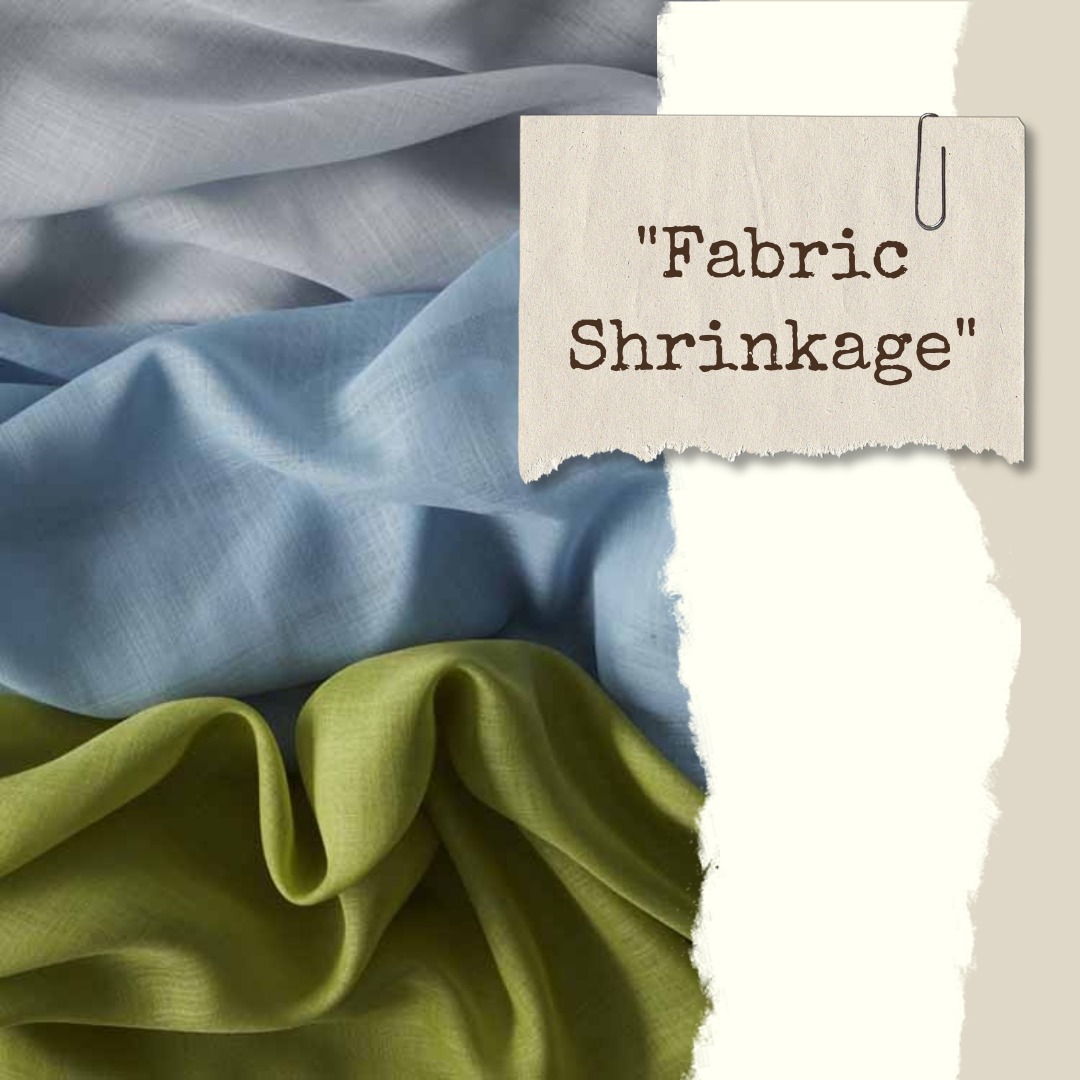
Fabric shrinkage, a dimensional diminution of textile materials, presents a persistent challenge in garment construction and textile care. This dimensional alteration can significantly affect the fit, aesthetic appeal, and lifespan of garments.
It manifests as a reduction in length, width, or both. This happens when the fabric is exposed to things like water, heat, or even just time, which allows the fibers to relax and contract, or sometimes forces them to compress.
Mechanism of Fabric Shrinkage
Fabric shrinkage in hydrophilic yarns (like cotton) happens primarily due to changes in yarn spacing. When the fabric gets wet, the fibers and yarns swell, increasing yarn diameter.
While fiber swelling contributes a small amount to shrinkage, the biggest factor is how the yarns accommodate this swelling within the fabric structure.
Imagine the warp and weft yarns interlacing. When the weft yarns swell, the warp yarns need more space to go over and under them. Instead of the warp stretching, the weft yarns simply move closer together, causing the fabric to shrink in the warp direction.
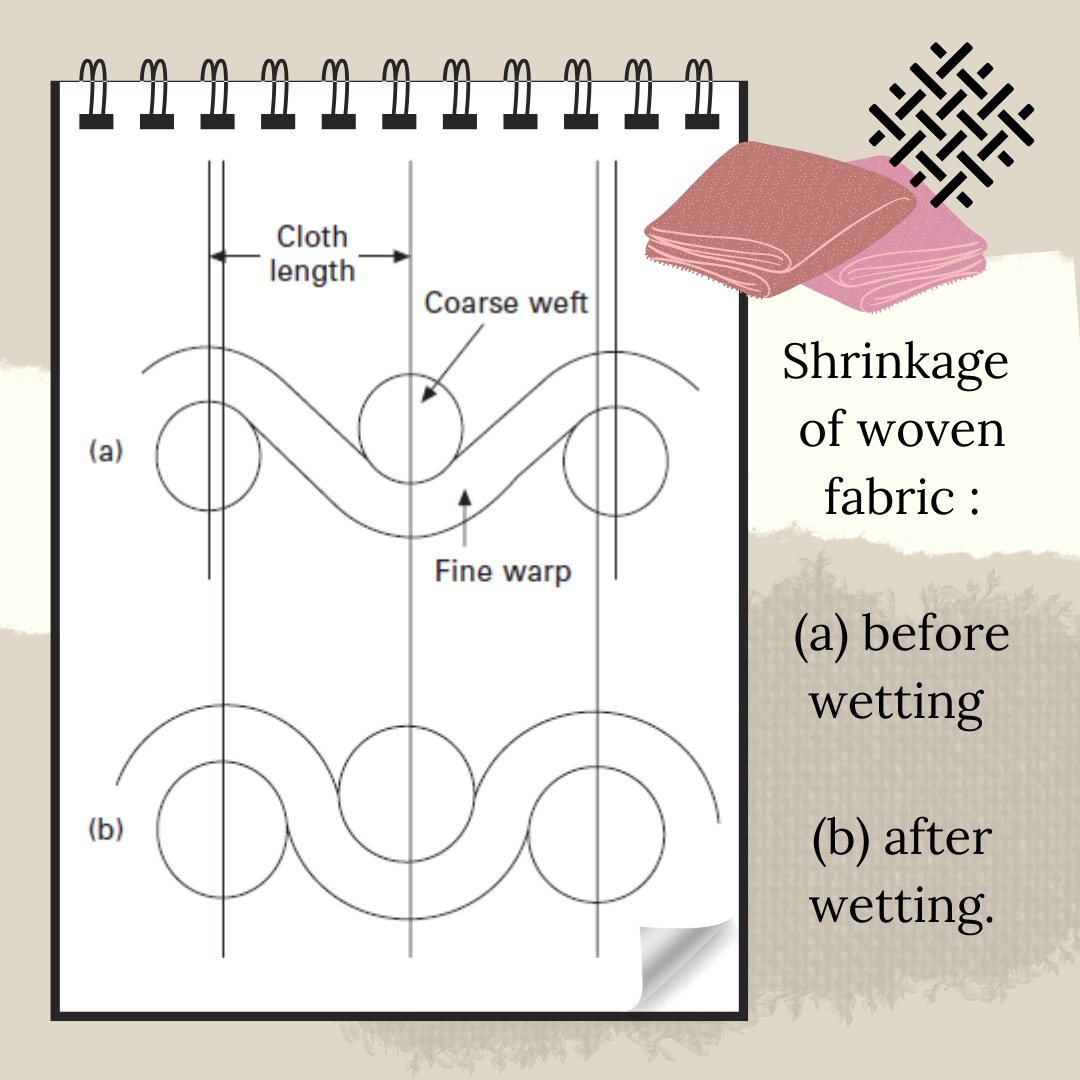
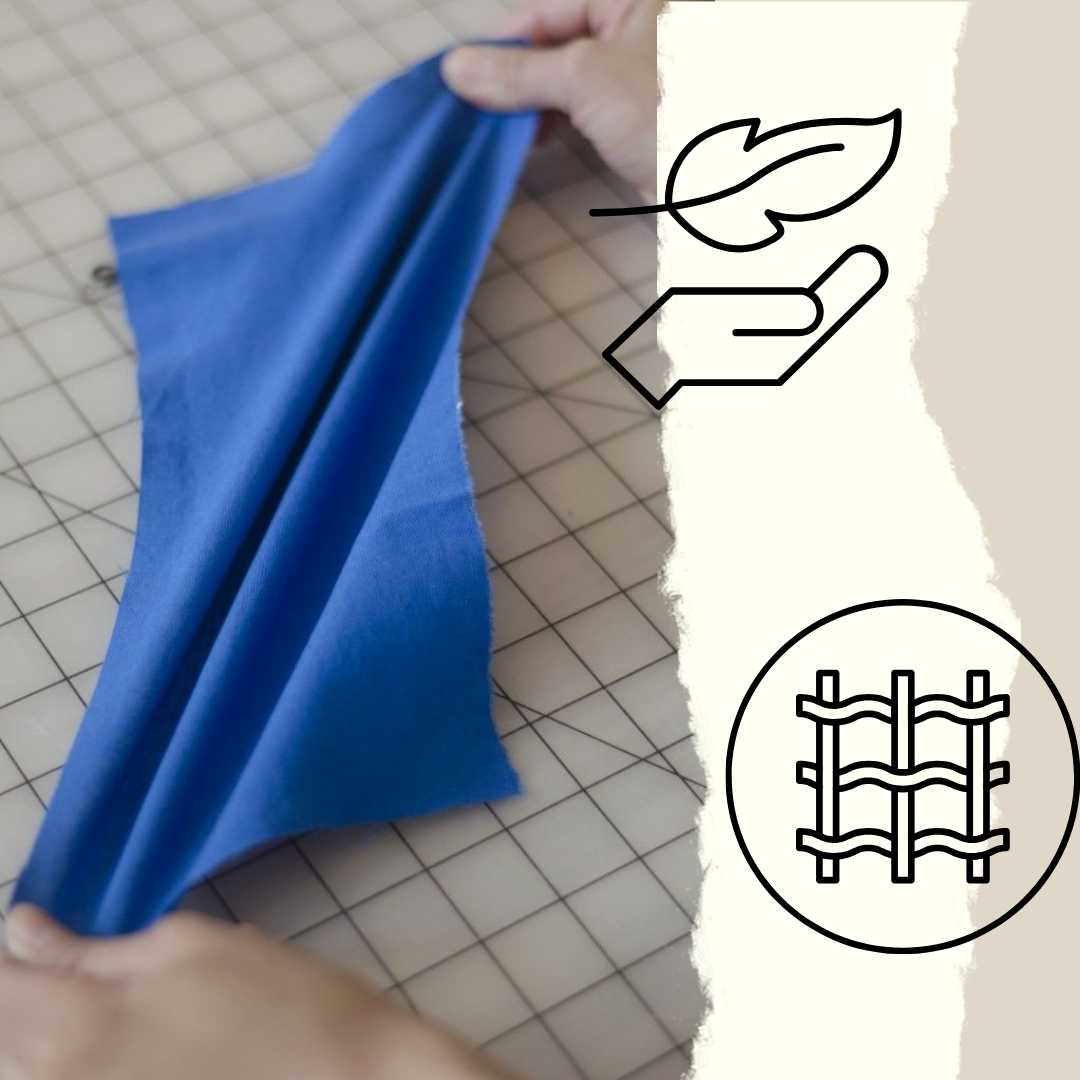
Why fabric Shrink?
The major cause of fabric shrinkage due to the swelling of threads on wetting is that the thick warp yarn requires more space to enable fibers to pass over and under the swollen weft yarn. The warp adopts an undulating path and shrinks the cloth.
The same principle applies to weft shrinkage. Essentially, the fabric shrinks because it's easier for the yarns to rearrange themselves than for the swollen yarns to stretch. Tightly woven fabrics, especially those made with modern machinery, tend to shrink more due to this yarn compaction.
Fabric's Metamorphosis
Natural fibers, while loved for their breathability and comfort, are notorious for their tendency to shrink. This happens because of the way their fibers interact with moisture and heat.
Here's a breakdown of the main types of shrinkage that affect natural fabrics:
Relaxation Shrinkage
- The "First Wash" Phenomenon: Think of this as the fabric's initial reaction to being washed. It's the most significant shrinkage and often happens primarily during the first wash.
- Fiber Relaxation: During manufacturing, fibers are often stretched and held under tension. When they get wet, and sometimes heated, they relax and return to their natural state, causing the fabric to contract. It's like they're finally taking a deep breath and settling back into their comfy shape.
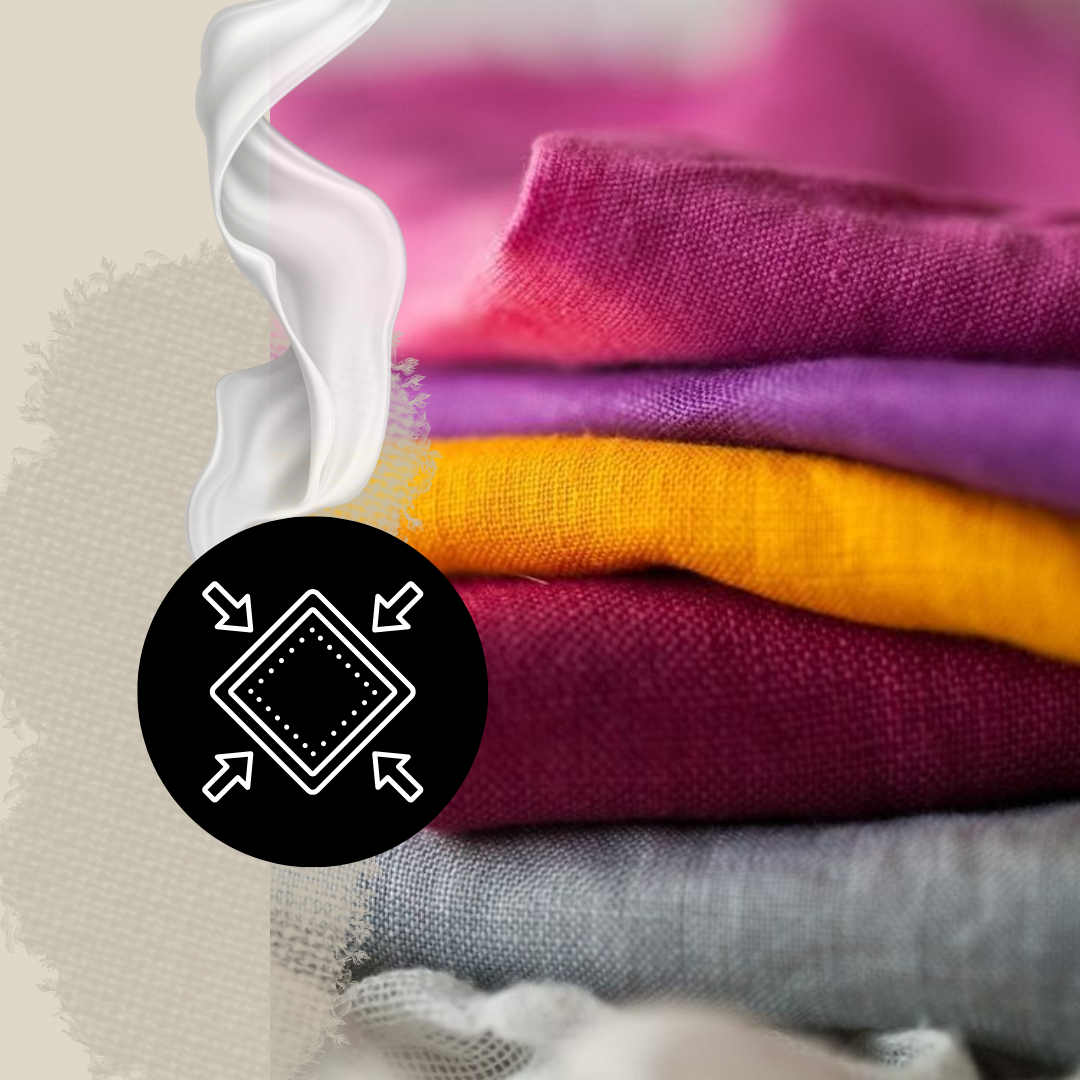
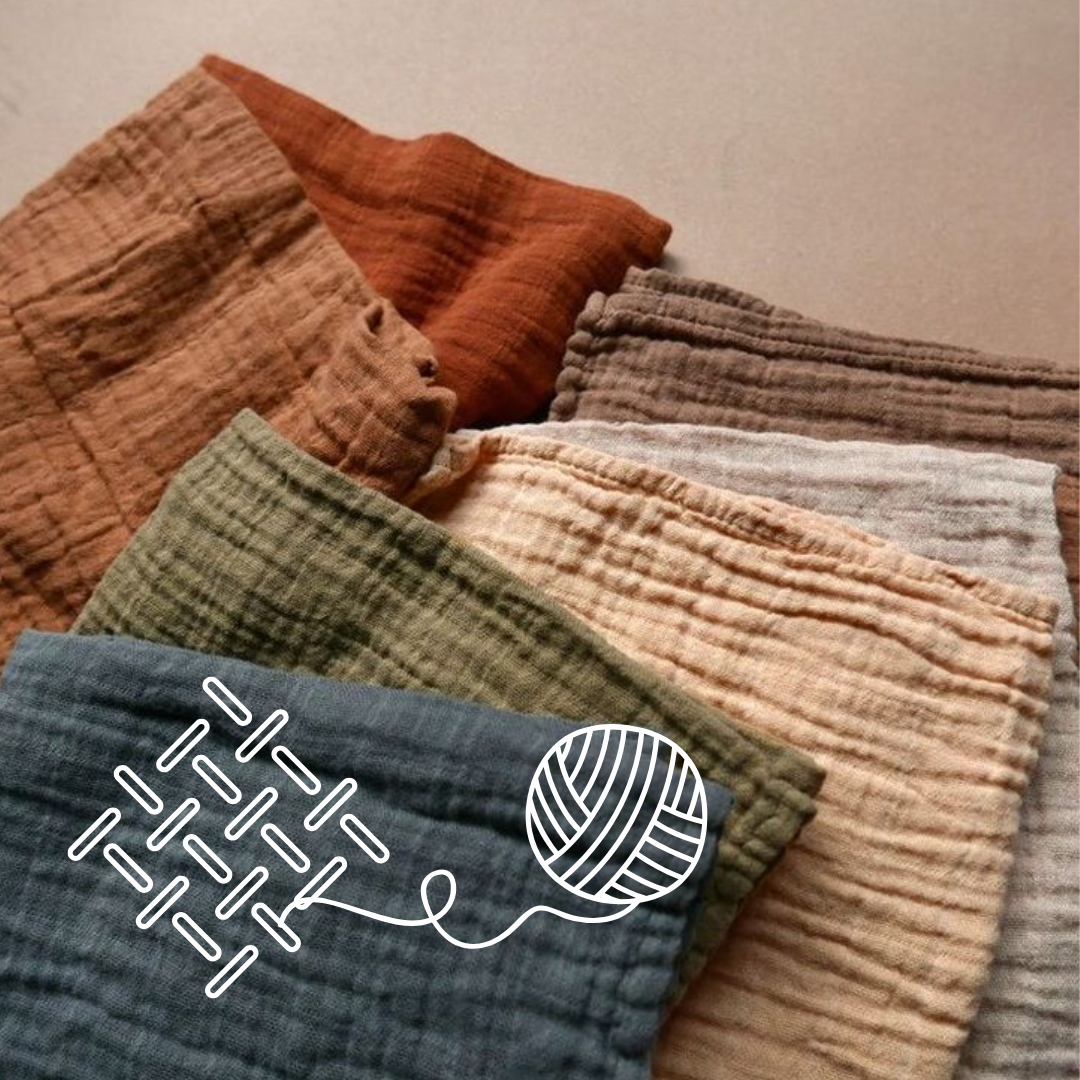
Progressive Shrinkage
- The "Creeping" Shrinkage: This is the sneaky kind of shrinkage that happens gradually with each subsequent wash. It's a slow but steady process where the fabric subtly gets smaller over time.
- Cellulosic Fibers: Cotton, linen, and rayon are particularly prone to this type of shrinkage. It's like their fibers have a memory and keep wanting to go back to a slightly smaller size each time they're washed.
Felting Shrinkage
- Wool's Unique Problem: This is a special type of shrinkage that primarily affects wool. It's not just about the fibers getting shorter, it's about them getting tangled and matted together.
- Interlocking Scales: Wool fibers have tiny scales that can interlock when exposed to heat, moisture, and agitation. This creates a dense, felted texture, and the fabric shrinks significantly.
Fabric Shrinkage
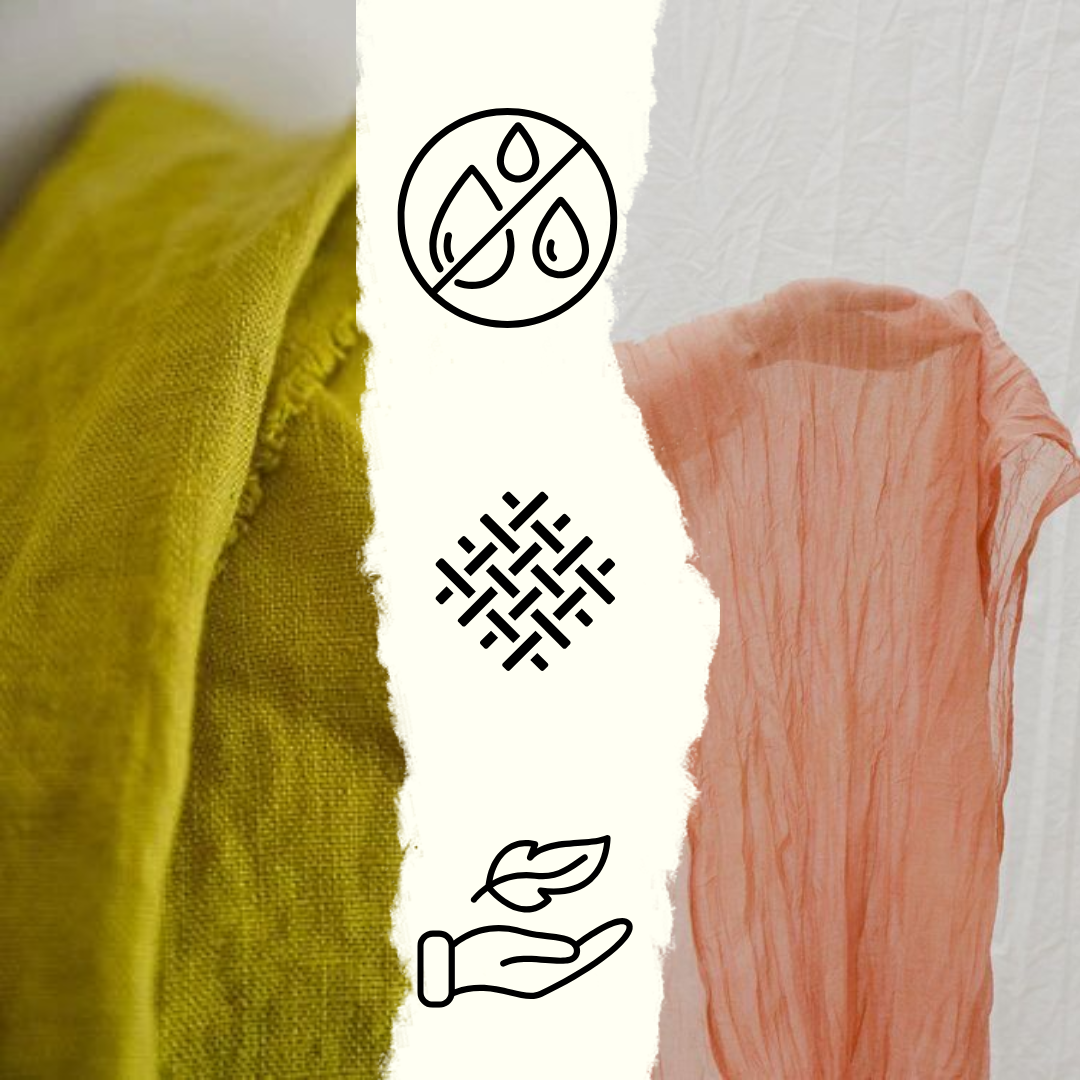
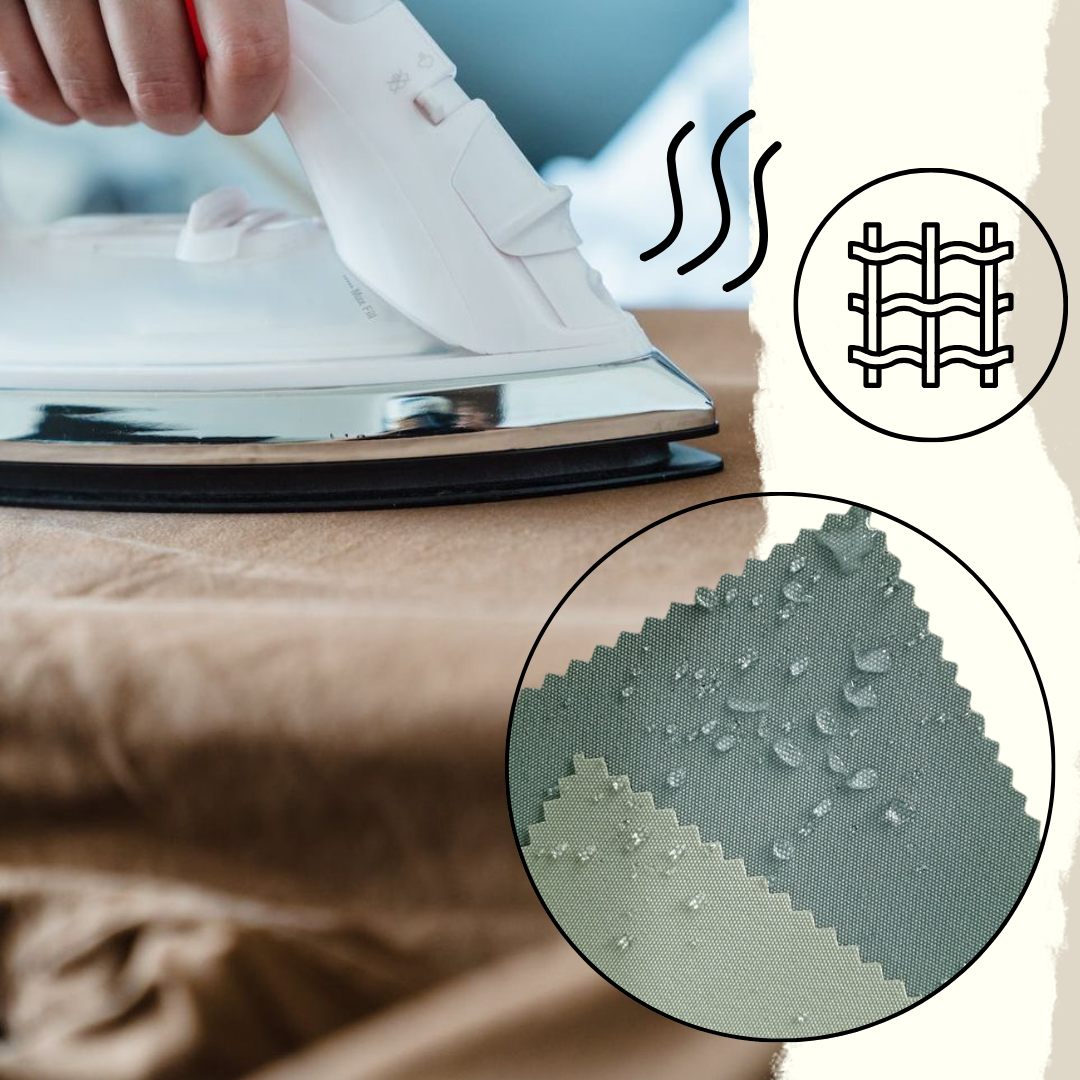
Reason for Fabric Shrinkage
Fabric shrinkage that frustrating tendency of textiles to become smaller—stems from a variety of interconnected factors. Understanding these factors is essential to minimize shrinkage and maintain the quality of fabrics. Here are some common reasons for fabric shrinkage:
- The Nature of the Fiber:
The very building blocks of your fabric play a crucial role. Natural fibers, like cotton and wool, are inherently more susceptible to shrinkage than their synthetic counterparts, such as polyester and nylon. This difference arises from the way these fibers interact with moisture.
- How the Fabric is Made:
The construction of the fabric—whether it's woven or knitted—significantly impacts its stability. Loosely woven or knitted fabrics, with their more open structure, are generally more prone to shrinkage than tightly woven or knitted materials.
- The Manufacturing Process:
Textiles often undergo various finishing processes, some of which are designed to minimize shrinkage. Pre-shrinking treatments, for example, aim to stabilize the fabric before it reaches the consumer.
- The Impact of Heat and Moisture:
Heat and moisture are powerful triggers for shrinkage. Washing fabrics in hot water or using high heat in the dryer can cause fibers to contract dramatically. Even excessive humidity can contribute to shrinkage, particularly in natural fibers.
- The Role of Mechanical Forces:
The mechanical action of washing and drying can also induce shrinkage. Aggressive washing cycles, high-speed spinning, and tumble drying can cause friction and agitation, leading to dimensional changes in the fabric.
- Careless Handling:
Neglecting proper care instructions is a common cause of shrinkage. Ignoring recommended washing temperatures, using harsh detergents, or mishandling delicate fabrics can all contribute to unwanted shrinkage.
- The Complexity of Blends:
Fabrics composed of fiber blends can present unique challenges. If the constituent fibers have different shrinkage properties, the fabric may shrink unevenly, leading to distortion or an undesirable fit.
The Shrinkage Whisperer: Expert Tips for Textile Care
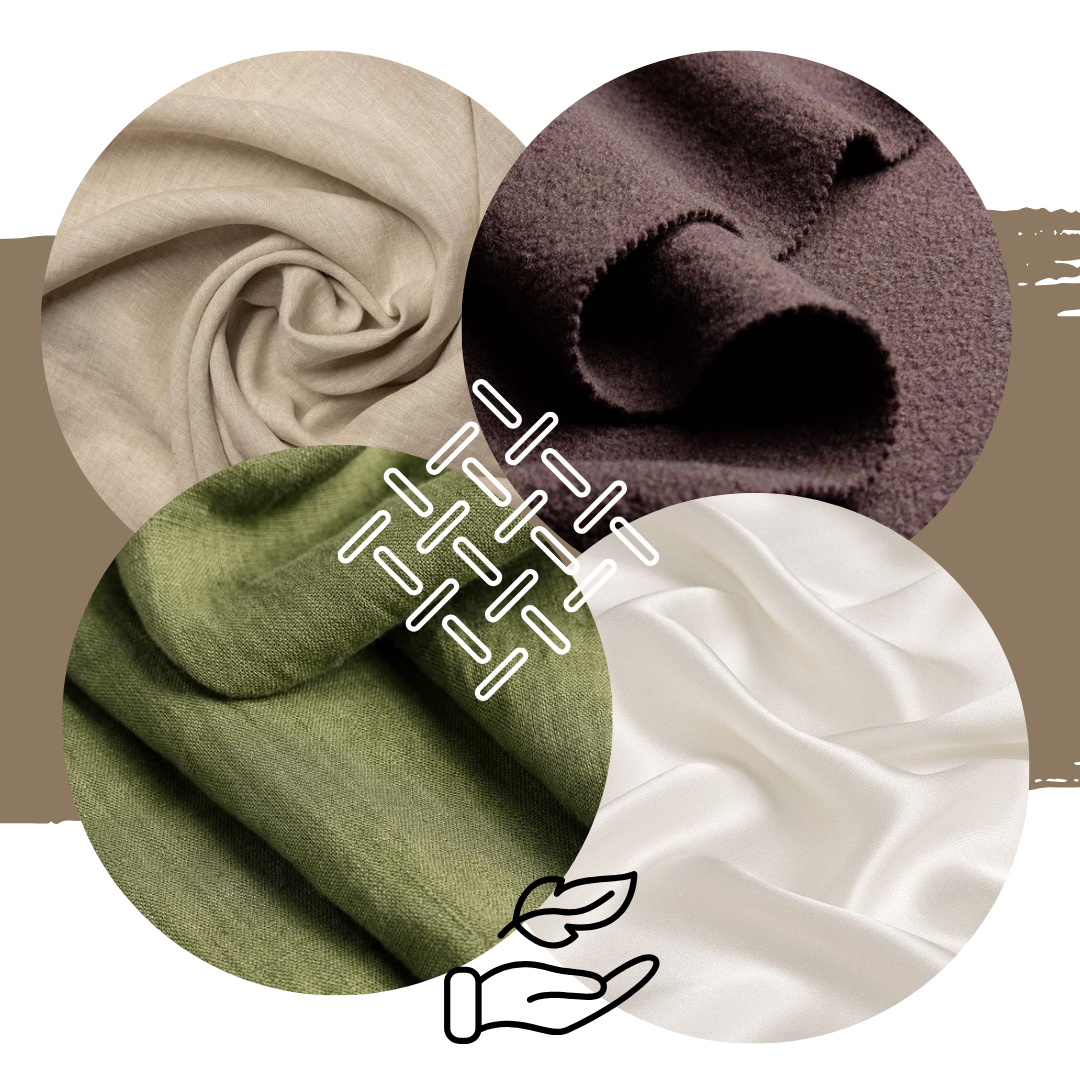
- Read the care label: Always follow the manufacturer's instructions.
- Wash in cool water: Avoid hot water, which can cause significant shrinkage.
- Use a gentle cycle: This helps prevent excessive agitation that can damage fibers.
- Air dry or tumble dry low: Avoid high heat in the dryer, which is a major shrinkage culprit. Air drying is the safest option.
- Consider pre-shrinking: It's a good idea to pre-shrink it by gently hand washing and air drying it before cutting and sewing.
Different fibers have unique requirements (e.g., wool felts, silk is delicate). Proper care extends the life of your textiles and keeps them looking their best.
How Different Fabric Shrink?
Linen Fabric
Linen, a textile woven from the fibers of the flax plant, exhibits a moderate tendency to shrink. Typically, linen fabrics will contract by approximately 2% to 5% during their initial laundering. Minimal additional shrinkage may occur with subsequent washes.
Bamboo Fabric
Bamboo fabric shrinkage can vary, but it's generally less than cotton. One might expect somewhere between 2-6% shrinkage.
Corn Fabric
Compared to natural fibers like cotton, corn fabric generally exhibits less shrinkage. It might expect have somewhere between 1-3% shrinkage.
Hem Fabric
The biggest factor is the fiber content of the hem fabric. If it's a natural fiber like cotton or linen, it will likely shrink more than a synthetic fiber like polyester. Almost similar to cotton and linen shrinkage .
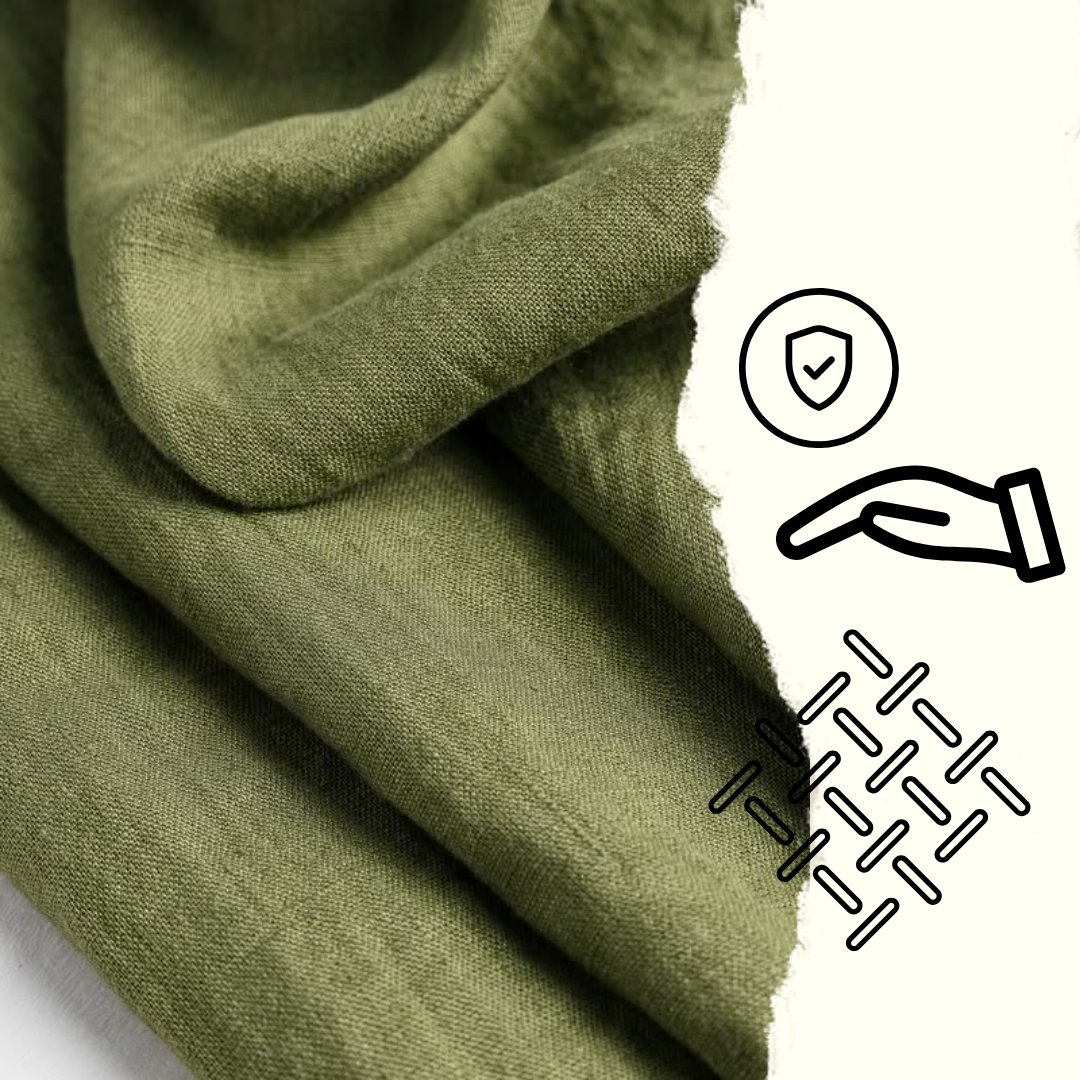
Cotton Care Essentials
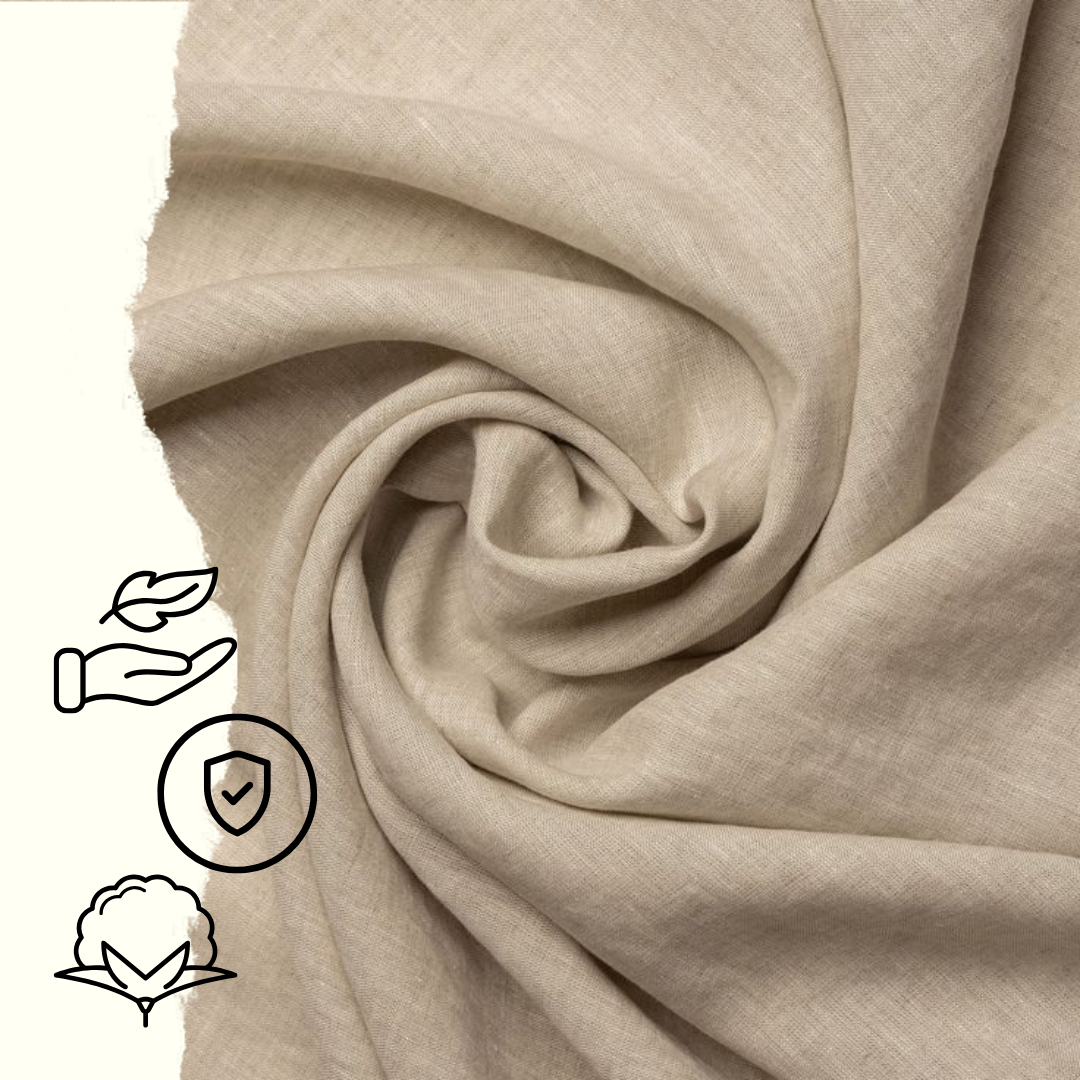
Cotton, while cherished for its comfort and breathability, is also known for its propensity to shrink. Typically, cotton fabrics can contract by 3% to 5% during their initial laundering and subsequent washes. However, cotton textiles labeled "pre-shrunk" or those that have undergone pre-shrinking treatments during manufacturing are less prone to this dimensional change.
Tips to Minimize Cotton Shrinkage:
- Read the care label: Always follow the manufacturer's instructions.
- Wash in cold water: Avoid hot water, which can cause significant shrinkage.
- Use a gentle cycle: This helps prevent excessive agitation that can damage fibers.
- Air dry or tumble dry low: Avoid high heat in the dryer, which is a major shrinkage culprit.
- Pre-wash fabric before sewing: This is crucial for garments to prevent distortion after they're made.
Wool Care Essentials
Wool, a natural fiber prized for its warmth and texture, is unfortunately quite susceptible to shrinkage. It can contract significantly, often by 10% to 20%, particularly when subjected to high temperatures or agitation during laundering.
Tips to Minimize Wool Shrinkage:
- Read the Care Label: Always follow the manufacturer's instructions. Most wool garments are labeled "dry clean only," which is the safest option.
- Hand Wash with Extreme Care: If hand washing is allowed, use cool or lukewarm water and a gentle detergent specifically designed for wool. Avoid any harsh scrubbing, twisting, or wringing.
- Avoid the Washing Machine and Dryer: These are generally a no-go for wool. The agitation and heat can cause felting and significant shrinkage.
- Air Dry Only: After gently rolling the garment in a towel to remove excess water, lay it flat to dry, away from direct sunlight or heat sources.
- Store Properly: Store wool garments folded, not hung, to prevent stretching.
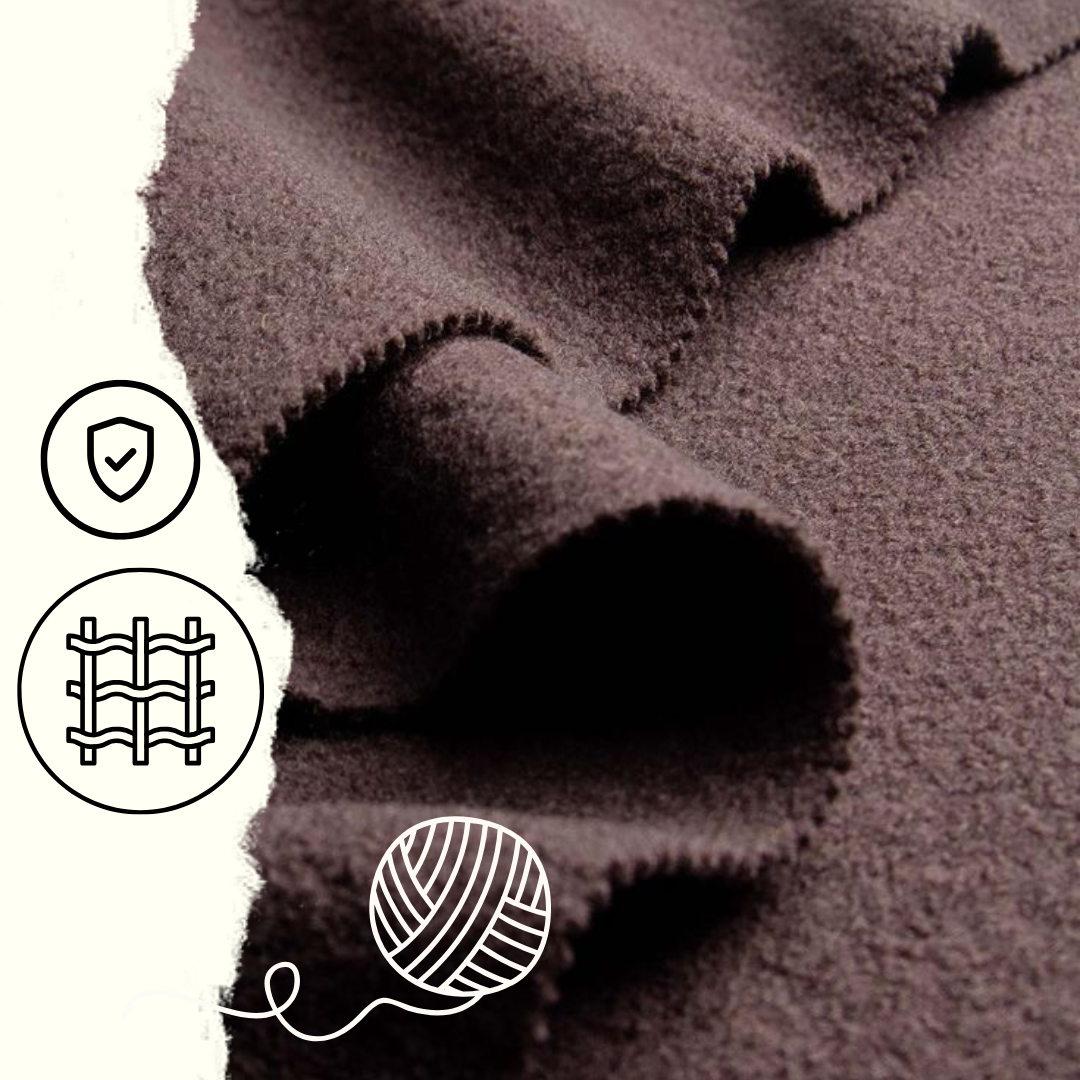
Silk Care Essentials
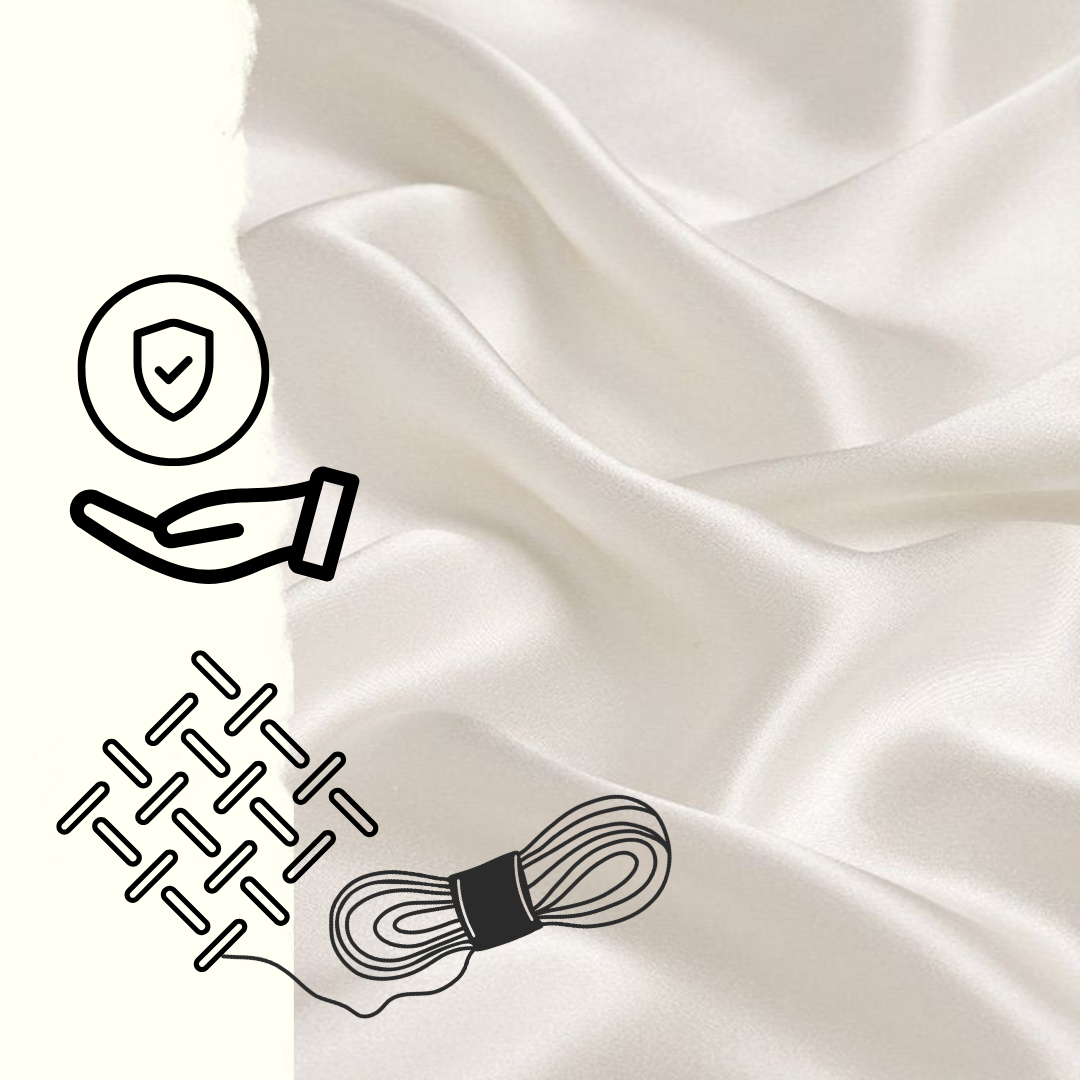
Silk fabrics, renowned for their luxurious drape and sheen, generally exhibit minimal shrinkage compared to other natural fibers. Typically, they experience a dimensional reduction of approximately 1% to 3% during laundering. However, certain silk blends or specialized weaves may be slightly more prone to shrinkage.
Tips to Minimize Silk Shrinkage:
- Read the care label: Always follow the manufacturer's instructions. Most silk garments are labeled "dry clean only," which is the safest option to prevent shrinkage and maintain the fabric's quality.
- Hand wash with care: If the care label allows for hand washing, use cool or lukewarm water and a gentle detergent specifically designed for silk. Avoid harsh scrubbing or wringing.
- Avoid the washing machine and dryer: Machine washing and tumble drying can be too harsh for silk and can lead to shrinkage and damage.
- Air dry only: If hand washing, gently roll the garment in a towel to remove excess water and then lay it flat to dry, away from direct sunlight or heat sources.
- Iron with caution: If ironing is necessary, use the lowest heat setting on your iron and use a pressing cloth to protect the silk fabric. Iron on the reverse side of the fabric.
- Consider pre-shrinking: If working with silk fabric for a project, consider pre-shrinking it by gently hand washing and air drying it before cutting and sewing.
Always remember this,
Failure to follow proper care instructions can increase the risk of fabric shrinkage. Ignoring recommended washing temperatures, using harsh detergents, or subjecting delicate fabrics to rough handling can result in shrinkage.
Fabric care is an act of preservation. Understanding shrinkage is the first step in ensuring your textiles stand the test of time.
your questions, our expert answers
Why is it important to consider shrinkage when sewing garments?
arrow_drop_downAccounting for potential shrinkage allows you to adjust patterns and seam allowances, ensuring a proper fit after the first wash. Pre-washing your fabric before cutting it out is a great way to avoid issues down the line.
Is dry cleaning a good way to prevent shrinkage?
arrow_drop_downYes, dry cleaning is often recommended for fabrics prone to shrinkage, as it avoids water and high heat.
Can ironing help with shrinkage?
arrow_drop_downSometimes. Light steaming and ironing can help relax fibers and restore some dimension, particularly after minor shrinkage.
Which natural fibers are most likely to shrink?
arrow_drop_downCotton, linen, wool, and rayon are all prone to shrinkage.
More Blogs
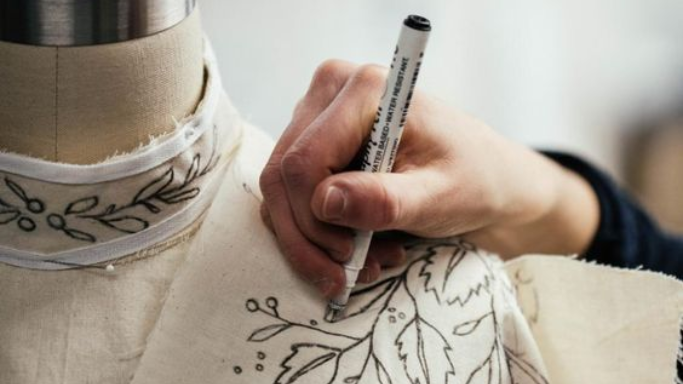
an introductory guide to garment analysis

how to nurture your natural-dyed clothing

handmade textiles care guide






